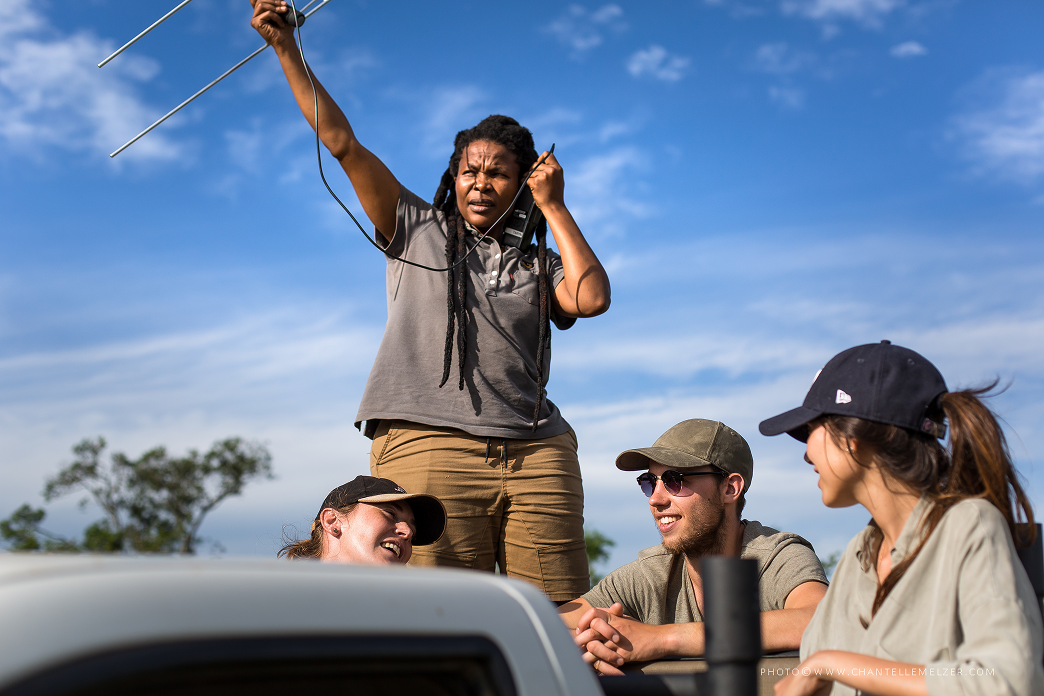Time really does fly. It was a year ago when we officially started supporting the North Island Seychelles conservation project, and the time had come for a short visit to touch base with our conservation team there on the ground. After a 5 hour flight from South Africa, and a short ferry across from the main island Mahe, I could soon see why North Island is considered by many to be part of the most beautiful archipelagos in the world. It is exactly how it looks on postcards - luminous white beaches, granite outcrops and azure oceans. Stunning.[caption id="attachment_11201" align="alignnone" width="865"]

Left: view from the top of one of the granite outcrops. Right: a partially vegetated granite outcrop. All Photos by: Chris Kelly.[/caption]Something very special about North Island is that it's one of the few in the archipelago that is completely rat-free. Rats (among various invasive species such as, cats, owls and Indian Mynas) were introduced to the Seychelles when the early explorers first arrived on these beaches. Over the years they have had a detrimental impact on the indigenous species - especially the endemic bird population. So, being declared rat-free in 2005 meant a huge step forward in conserving and restoring the Island.[caption id="attachment_11203" align="alignnone" width="865"]

Aldabra Giant Tortoises are listed as Vulnerable on the IUCN Red List and there is a healthy population of these tortoises on the island, some introduced. The oldest is estimated to be 180 years old.[/caption]Thanks to a dedicated and passionate Seychelles conservation project team, led by Tarryn, CJ and Elliot, the Island is working towards a Protected Area status. The Seychelles conservation project focuses on three key aspects, Endangered Species monitoring, Marine Conservation and Ecosystem Restoration. These are listed below (among others).[caption id="attachment_11206" align="alignnone" width="865"]

Hawkbills Turtles are listed as critically endangered in the IUCN Red List. With turtle-friendly beaches diminishing worldwide, this makes North Island an important nesting site. This species nests on the Island from September to March and an average of 150 are recorded each year. Left: Adult Hawksbill Turtle emerging from the surf to lay her eggs. Right: a dry coconut used to demarcate the turtle nest.[/caption]
Seychelles Conservation Project Goals
- Turtle Nest Monitoring, Green and Hawksbill Sea Turtles.
- Monitoring of the Aldabra Giant Tortoise population.
- Rehabilitation of the endemic vegetation of North Island, paying special attention to the Takamaka forest.
- Vegetation rehabilitation work (this is a huge task).
- Trapping, marking and re-capturing the Seychelles Black Mud turtle population to obtain population estimates.
- General bird monitoring.
- Monitoring of the seabird populations, mainly the Wedge-tailed Shearwater and the White-tailed Tropicbird.
- Eradication of the Indian Myna population (not for volunteers).
- Snorkelling along coral transects in order to compile a photographic ID database of corals and fish occurring on the reefs around the island and monitoring changes in coral conditions.
- Monitoring beach movement patterns on the three beaches of the island by means of photographs and by using Abney levels.
Unfortunately our time on the Seychelles conservation project was limited, so we only got involved in some of the above.[caption id="attachment_11204" align="alignnone" width="865"]

Left and right: examples of nest sites of the White Tailed Tropic bird. Monitoring of the indigenous birds and their nesting sites is ongoing, and critical. Nesting birds and the success rate thereof is an important indicator when evaluating ecosystem restoration.[/caption]
Some New Developments of the Seychelles Conservation Project
- An old storage building is in the process if being renovated to be used as part of the Seychelles conservation project. The staff village house will be dedicated to our Seychelles volunteers.
- Wildlife ACT will be sponsoring an SMS camera trap to help with the turtle nest monitoring. The idea is the SMS camera will be placed at turtle nests just before estimated time of hatching, which will alert the conservation team, hence improving hatchling emergence monitoring.
[caption id="attachment_11205" align="alignnone" width="865"]

Left: White-tailed tropic bird on its nest in a rock crevice. Right: Elliot with a dead White-tailed tropic bird chick, sadly killed by crabs in its nest. Only about 50% of all chicks survive to fledging.[/caption]
Text by: Chris Kelly
North Island in the Seychelles was awarded as the National Geographic World Legacy Awards winner for Conserving the Natural World 2017. Our volunteer program allows you to come and join the environmental team on the ground and help them carry out important conservation work.





.jpg)
.jpg)




.jpg)
